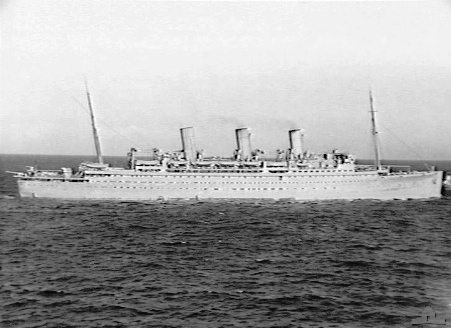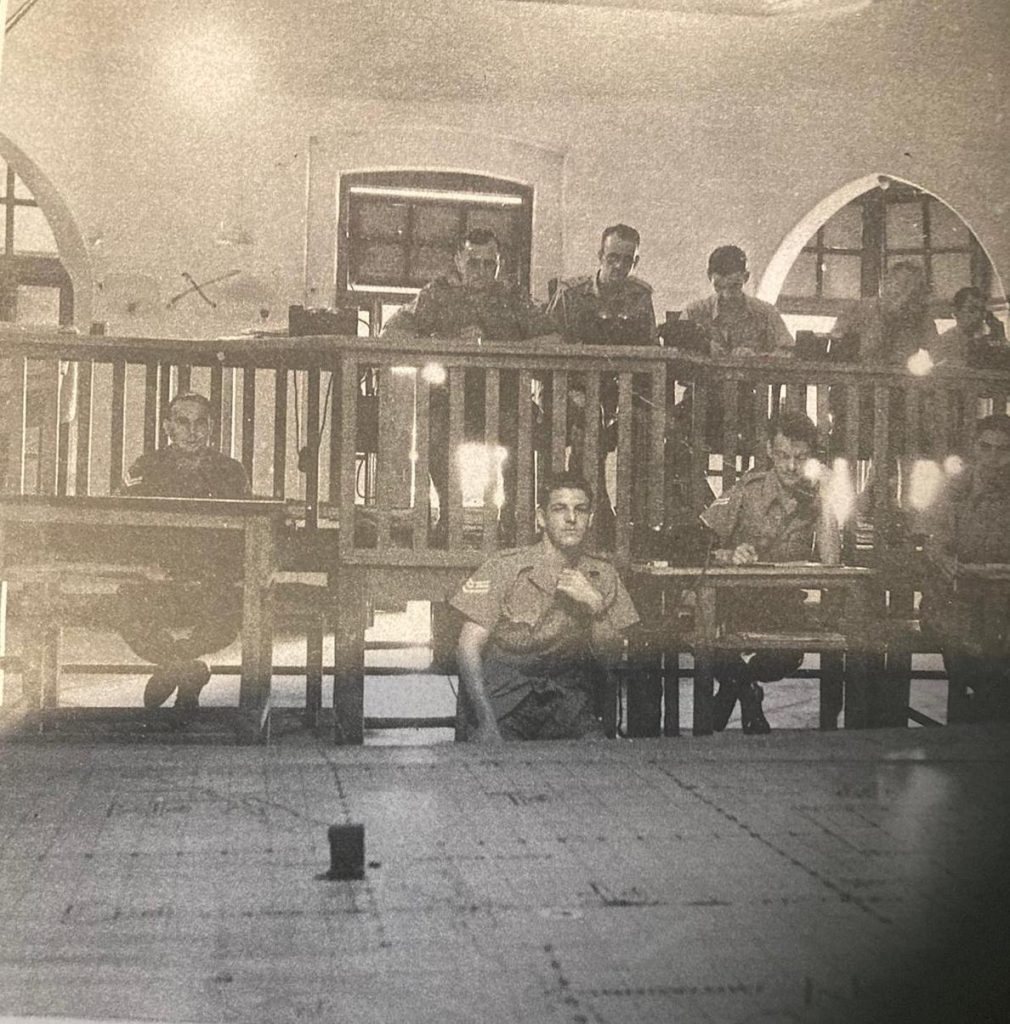
In February 1942 we sailed from Gouroch, in Scotland, aboard ‘The Duchess of Richmond’ a Canadian Pacific liner requisitioned as a troopship for the war effort. Built for the North Atlantic run she was ill-equipped for tropical service.
It was usual at this time to carry more than the usual complement and this was at the worst time of the war, two months after Pearl Harbour. We were grossly over-crowded and there were no fans on board to ease the sweltering heat.
The Japanese were rampaging all over the East, we could not go through the Suez Canal. We sailed around Africa, the first landfall being Sierra Leone, then on to Capetown where we anchored briefly off-shore. We first docked at Durban on the east coast of South Africa; we were there for three days and several men ‘jumped ship’!

The Japanese got to Singapore before us. We were diverted to Bombay first and then to Ceylon where we stayed in Colombo for six months moving next to Calcutta. For the next year I worked in the operations room at the aptly named Baligunge (a suburb of Calcutta).
The heat struck like a fist between the shoulder blades and my clothes were constantly wet. There were ‘dhobi wallahs’ who offered to do our washing. They returned the garments spotlessly clean and immaculately pressed the next day. There was even a ‘flying dhobi’ who performed the same service in a matter of hours. I have never been able to work out how they managed to do this in view of their limited resources. The charge for this excellent service? A few rupees (pence)..
When I was on night shift I always took a walk before going fo bed) it was still relatively cool at that hour. There were railway tracks everywhere at street level. One morning I found the body of a man who had been run over by a train. He had been cut into three pieces. Greatly perturbed I hurried back to camp to report the accident to the local authorities only to discover that no-one was the least bit concerned. Natives were expendable.
I found India to be shocking, horrific, beautiful, fascinating and incomprehensible. The modern term would be ‘culture shock’.
Christmas Day 1943 was the worst Christmas Day of my life. I came off shift at 2 p.m. only to find that the day-shift had eaten all the dinner. A stray bomb, the only one ever to fall on Baligunge, had hit the local dairy, there was no milk for the tea and my Christmas gift from the Red Cross was a festively wrapped cigar. I sat disconsolately on my charpay wondering if there was anything I could swap it for. There wasn’t.
My next posting was to Cox’s Bazaar on the Aracan Peninsula in South East Bengal, now Bangladesh. Cox’s Bazaar is now a thriving holiday resort, a kind of Robin Hood’s Bay with jungle.
In March 1945 my three year married man’s tour was complete.
We sailed from Bombay on board the S.S. Orontes a P. and O. liner custom built for the tropics and much more comfortable than ‘The Duchess’.
The allies were winning, they had gained control of the Mediterranean, morale was good and we were jubilant as we sailed triumphantly through the Suez Canal en-route for England. By the time we reached Port Said we had one case of smallpox on board. We were quarantined, lying off and ‘flagged out’ to warn of the disease.
We were almost transferred to another ship that had been occupied by Italian prisoners of war. It was indescribably filthy there was almost a mutiny, we continued our journey eventually sailing for home still on board the Orontes.
Egypt had joined in the war on the side of the allies, lots of others jumped on the band wagon too, more than a hundred countries managed to end up on the winning side. As a compliment to Egypt all ships in the harbour dressed overall a few months before V.E. day. If Egypt was part of the Empire why did they have to do this? This was a source of amusement among the troops. We stopped laughing when we were all vaccinated – again. No-one else developed smallpox.
We came out into the Mediterranean where a statue of Ferdinand de Lesseps French builder of the Suez Canal, stood pointing to ‘The Gateway to the East’ Someone drew a cartoon of this the caption beneath the outstretched hand was ‘Baksheesh! Baksheesh!’.
The statue was destroyed in 1957 at the time of the Suez crisis.
There was snow and sleet in the Mediterranean in March 1945. We were ordered to ‘go into blue’ as opposed to our khaki drill tropical gear or ‘jungle greens’. There was great excitement on board as we prepared to dock at Liverpool where, the ‘old sweats’ assured us there would be bands playing, confetti and a big welcome for ‘our boys’
We arrived in heavy rain and the first person to come on board was a disgruntled docker who saw us eating bully beef and beetroot. He swore at us and told us of the bombings and privations suffered by the civilian population, especially in Liverpool.
Some of the lads were upset by this but it has to be said that many of these dockers who were in a reserved occupation and had done pretty well out of the black marketeering that was rife during the war.
On disembarkation we were sent to a reception centre in Blackpool, for troops returning from the East. We were all longing for our first taste of English beer. After parade we all streamed into the nearest waterfront pub where we received an enthusiastic welcome from a group of overalled women from a nearby munitions factory. They assured us they got good wages and refused to let us pay for anything. Nirvana!
We were a sorry sight as we assembled for parade at 2 p.m. Fortunately a lenient view was taken!
An officer gave us a ‘pep-talk’ to prepare us for wartime conditions, promising to post us as near to our homes as possible. Along with a Glaswegian and an Irishman, I ended up in Peterborough.